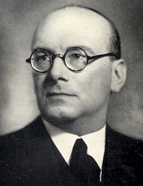

We could no longer ignore the "economic and social drama that he had to master". It was in this context that King João I set his sights on Ceuta. Why this city? In no small part at the suggestion of the Genoese merchants who lived in Lisbon. Genoa was probably the king's most determined and discreet ally. "Ceuta was the end of an asphyxiation, the starting point and the instrument of a new route to wealth, if not wealth itself. Everyone rushed messianically into the enterprise, king, infants, merchants, financiers, noblemen; and even the medieval Nun'Álvares" (Idem…, 2004, pp. 102 e 103). The progress in the History of Economics during the early 20th century enabled Veiga Simões to reappraise the history of the 14th and 15th centuries. Sombart, Simiand, Mitchell and Kondratiev were just some of the many who helped him with this (re)reading.
In his study of Prince Henrique, Veiga Simões begins by deconstructing the portrait drawn by Gomes Eanes de Zurara in the Crónica da Guiné [Chronicle of Guinea] later reinforced by the Renaissance, both through historiography and epic. To truly get to know the Prince, we had to free him both from the "primitivism of his chronicler" and from the "humanist tinsel that raised him to the head of a century". Starting from the concept of generation, thanks to the work of Wechssler and Pinder, we are explained the cultural melting pot in which Zurara drank and which made the Prince the "supreme coordinator of his time". Essentially, the same "isolated man whom the epic and history of the 1500s would later cast in bronze", turning the 15th century into the "century of the Prince". His much-praised crusading is also brought into question. Just like the nation itself. Or the Peninsula. In short: "To attribute our action in conquests and discoveries to the crusading spirit would be to personalise the activity of a people in a posthumous soldier of the faith. If so, it would all be the work of the mysticism of a man whom his country blindly followed. Now the country counted for something. The Prince's action could even be realised because it was a national action, and ultimately encompassed within itself the disparate interests of the classes, those that represented the immovable wealth of land and those that held the movable wealth of money and trade" (O Infante D. Henrique… [Prince Henrique], 2004, p. 140). In this work, Veiga Simões endeavoured to expand on his theses to such an extent, profusely accompanied by detailed footnotes, revealing the vast bibliography he had used, both national and foreign, from the most traditional and consensual titles to the most recent and original, that the number of pages far exceeded the space that the Management of the História da Expansão Portuguesa no Mundo [History of Portuguese Expansion in the World] had allocated to it. For this reason, the last part, namely the paragraphs dedicated to the role of Prince Pedro in the Discoveries, had to be summarised. When, in September 1428, the Duke of Coimbra returned to Portugal after travelling around Europe, there was another one. He left "a great medieval lord" and returned "a modern man" . Opposed to pursuing the policy of conquering North Africa, he favoured the search for gold and trade. So that the ships, as they advanced towards the coast, would bring the labour that the land needed, the metal that was so coveted by everyone, the spices that the continent offered and, finally, "fulfilling the journey of Africa", they could reach India by sea. In other words, the exact course our caravels took.
This work is financed by national funds through FCT - Foundation for Science and Technology, I.P, in the scope of the projects UIDB/04311/2020 and UIDP/04311/2020.
